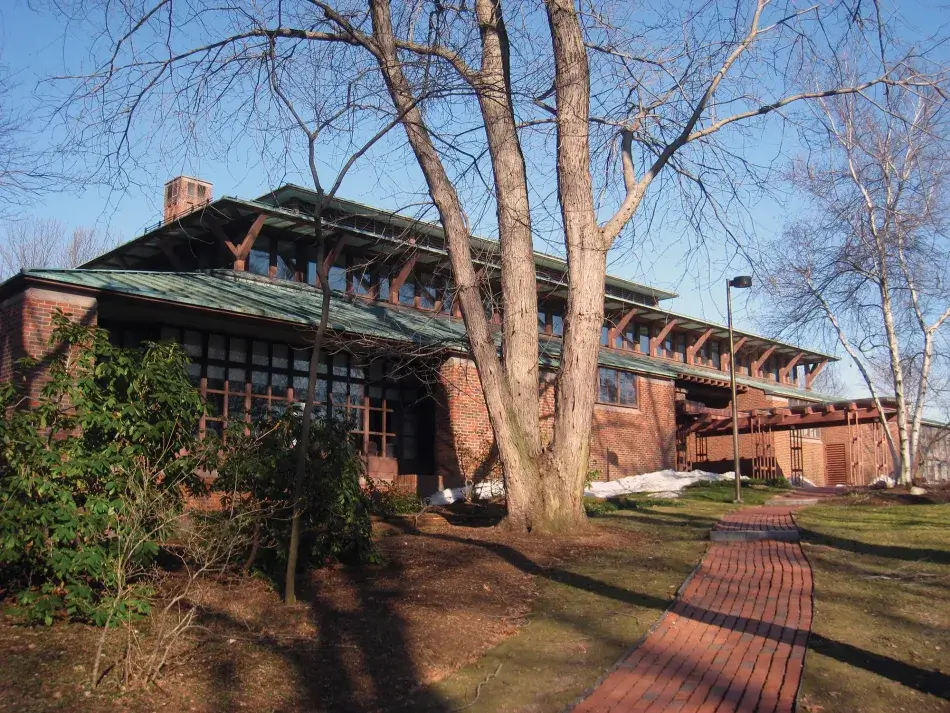Reflections from Henry Louis Gates, Jr. on Receiving the Don M. Randel Award for Humanistic Studies
Henry Louis Gates, Jr. is Alphonse Fletcher University Professor and Director of the Hutchins Center for African & African American Research at Harvard University. He was elected a Fellow of the American Academy of Arts and Sciences in 1993.
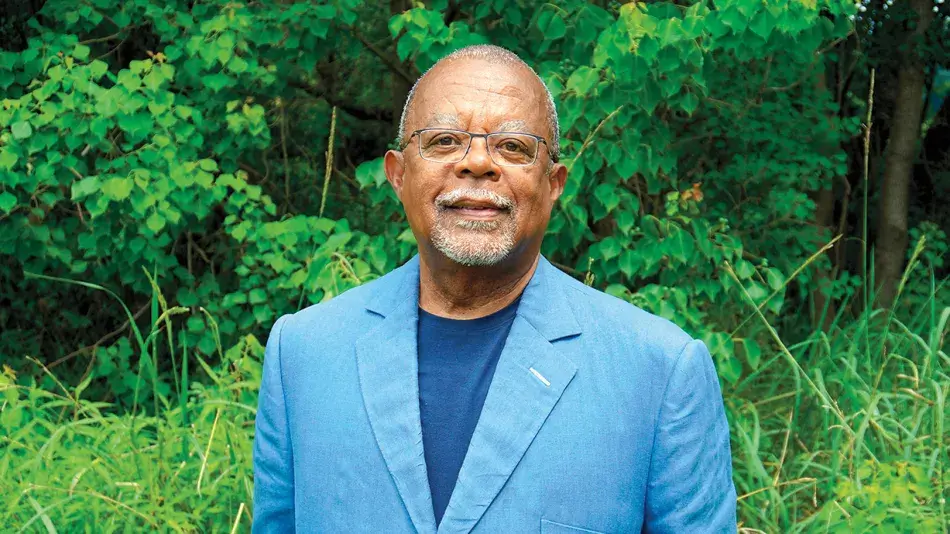
As we have gathered together today in one of the world’s greatest learned societies – founded in 1780, the second oldest in the United States, I believe – I’d like to take a few minutes to think about the nature and function of such “academic academies” in general, and, more specifically, the relation of their pursuit of excellence in “the arts and sciences,” and the relation of that pursuit to the history of race and race relations in Europe and America, which leads us back to the Enlightenment.
During the past few years, I have returned to two of my scholarly passions: the eighteenth century and the history of the so-called science of race. The most recent project along these lines is a new book entitled Who’s Black and Why? which I edited with Professor Andrew Curran at Wesleyan; the book is being published with Harvard University Press this spring. I’m taking this occasion to share a glimpse of a project about which I am very excited.
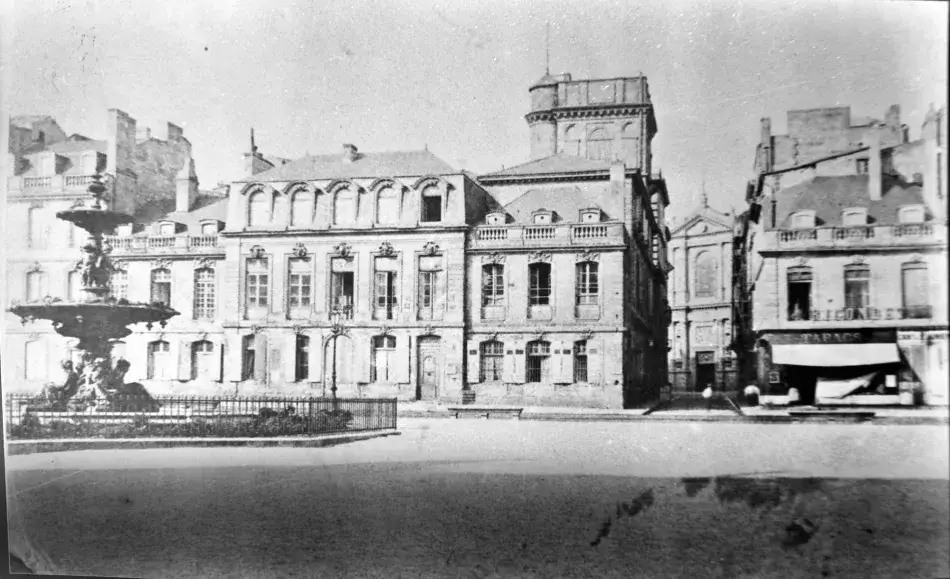
Who’s Black and Why? also marks a return for me to the type of archival work that I love. The book itself features sixteen never-before-published essays that were submitted to a contest on the source of blackness organized by the Bordeaux Academy of Sciences in 1739.
Sent in by a varied group of thinkers that included theologians, anatomists, naturalists, and climate theorists, this collection of essays is kind of like a focus group . . . that allows us to see how the notion of race was taking shape in European thought at the time.
Among these essays there is a lot of disagreement about where Africans came from. Some religious thinkers maintained that either Adam or Eve was Black. Others said that black skin was a mark of God denoting sinfulness. A number claimed that God made people White, but that this original group had “degenerated” into Black people due to a brutal climate, poor food, or bad air. Two more maintained that blackness was a God-given gift to allow people to live in the “torrid zone.” One of the more earnest authors lamented the fact that Black Africans had a moral defect in their parents, which had led their children to be Black.
There were also early “scientific” explanations. One author stated flatly that Africans had black semen. Several mentioned the fact that “blackness results from the blood” and that Africans have darker blood due to the effect of air. Another anatomist claimed that Africans had a special black bile circulating in their bodies or were the product of the black sperm of the father. My favorite is that White women produced Black children when they thought about an African or the color black during the sex act.
Ultimately the Bordeaux Academy did not choose any of these essays as the winner, which it would declare in 1741 after all the essays eligible for the prize had been received. Perhaps they found the answers wanting; perhaps some of the essays were too dangerous; perhaps they had second thoughts about drawing Europe’s attention to the city of Bordeaux’s relationship to the slave trade.
Recall that the essay contest posed a challenge to explain the curious phenomenon of the blackness of the color of the skin of sub-Saharan Africans. Curiosity about the skin color of Africans has a long history, predating the Enlightenment by as many as two thousand years. I have long found it fascinating that various cultures and societies denominated peoples living on the African continent by the color of their skin, or by their perception of the color of an African’s skin, starting with the Greeks, whose name for Africa was “Aethiopia,” signifying “burnt-faced.”
But the Greeks were not alone: in addition to Aethiopia, there are the words Zanzibar, Sudan, and Abyssinia – all are variations of the phrase “Land of the Blacks.”1 It has long struck me as curious that “black” was the color chosen to represent, or cloak, the range of brown colors that reside in the skin of African people. Be that as it may, the members of the Bordeaux’s Royal Academy of Sciences weren’t the first or, by far, the only scholars under the sun seeking wisdom and knowledge, who had become intrigued by the color of Africans who lived around and beneath the Equator.
The phrase “the arts and sciences” was an encompassing term for the accumulation of all human knowledge as “knowledge” was defined in the West. But “the arts and sciences” also coded for Reason, with a capital “R,” the very thing that separated man from beast, and, as it turns out, man from man. As Francis Bacon put it in 1620:
Again, let a man only consider what a difference there is between the life of men in the most civilized province of Europe, and in the wildest and most barbarous districts of New India; he will feel it be great enough to justify the saying that “man is a god to man,” not only in regard to aid and benefit, but also by a comparison of condition. And this difference comes not from soil, not from climate, not from race, but from the arts. . . . Now the empire of man over things depends wholly on the arts and sciences. For we cannot command nature except by obeying her.2
All too quickly, the arts and sciences would serve as a metaphor as Europeans attempted to figure out their place on the great chain of being and on the scale of nature, and their relation to the continent of Africa and its brown and black inhabitants, ways sadly more pernicious than mere intellectual or evolutionary assessment, ways truly “born of our vices,” to summon Rousseau’s curiously cautious admonition again. If we think of “the arts and sciences” as text, in what context did they unfold? Put simply, the absence and presence of knowledge of the arts and sciences would be used to justify the slave trade, the traffic in human beings that shipped 12.5 million Black people from their native land to the New World. To see the ways in which this discourse unfolded and was mediated, let us turn to two pillars of the Enlightenment: David Hume and Immanuel Kant.
David Hume, 1711–1776
Allan Ramsay (1713–1784), David Hume, 1711–1776. Historian and Philosopher, ca. 1776. Oil on canvas. Bequeathed by Mrs. Macdonald Hume to the National Gallery of Scotland and transferred. Scottish National Portrait Gallery. Image published under a Creative Commons CC BY-NC license.
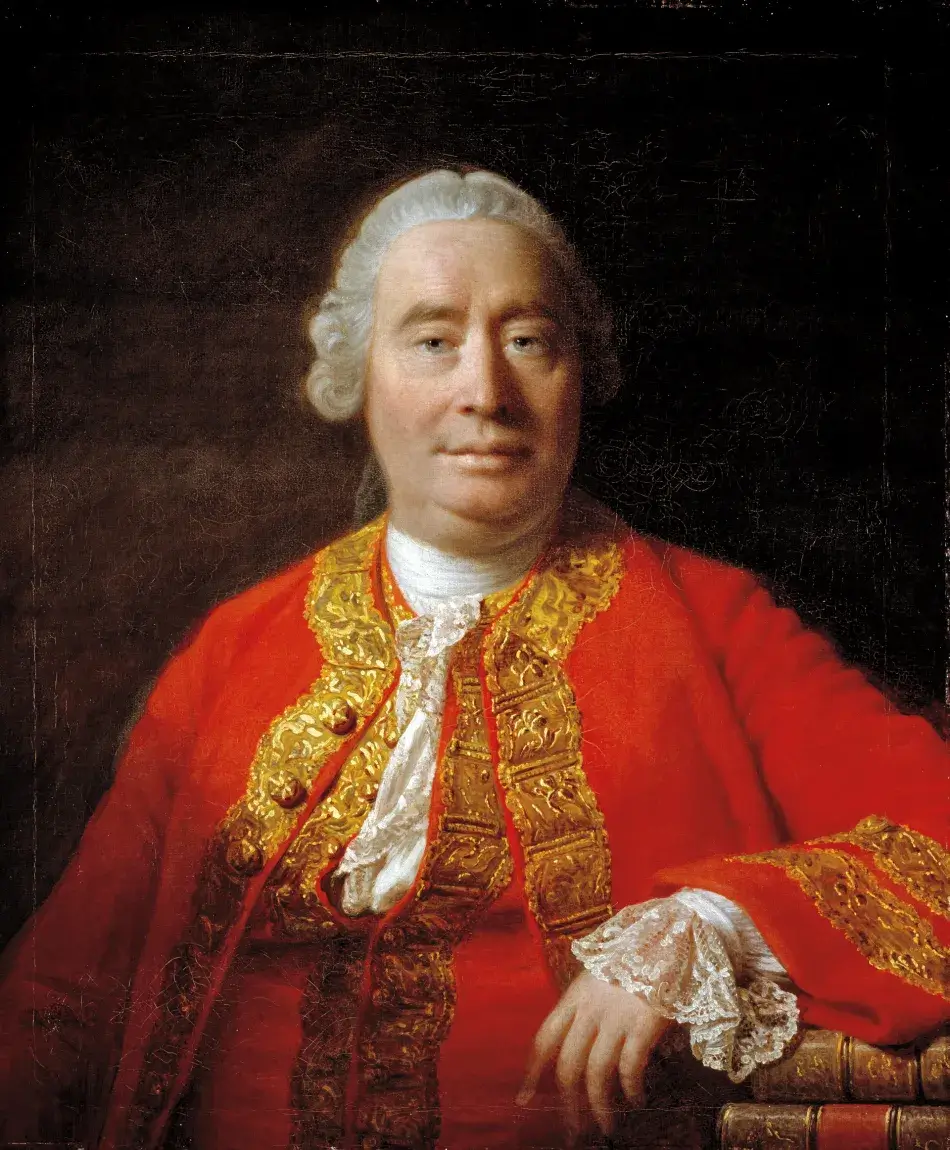
Writing in 1754, David Hume, in a footnote added to the second edition of his highly influential essay, “Of National Characters,” had the following to say about the relation of “the African” to “the arts and sciences”:
I am apt to suspect the negroes and in general all other species of men (for there are four or five different kinds) to be naturally inferior to the whites. There never was a civilized nation of any other complexion than white, nor even any individual eminent either in action or speculation. No ingenious manufactures amongst them, no arts, no sciences. On the other hand, the most rude and barbarous of the whites, such as the ancient Germans, the present Tartars, have still something eminent about them, in their valour, form of government, or some other particular. Such a uniform and constant difference could not happen, in so many countries and ages if nature had not made an original distinction between these breeds of men. Not to mention our colonies, there are negroe slaves dispersed all over Europe, of whom none ever discovered any symptoms of ingenuity; though low people without education will start up amongst us and distinguish themselves in every profession. In Jamaica, indeed, they talk of one negroe as a man of parts and learning; but it is likely he is admired for slender accomplishments, like a parrot who speaks a few words plainly.3
Here, Hume is referring to the legally trained Latin poet, the Free Jamaican, Francis Williams. I’ll have more to say about him a bit later.
We could perhaps pardon Hume for this blanket indictment of Africa and its Africans if his knowledge of Africans stemmed, as it would for Kant, from books and books alone. But surely Hume would have seen the portraits of Job Ben Solomon and William Ansah Sessarakoo, reproduced in The Gentlemen’s Magazine of June 1750, just four years before he added his infamous footnote.
Job Ben Solomon (1701–1773) and William Ansah Sessarakoo (fl. 1739–1749)
“Two African Princes [Ayuba Suleiman Diallo and William Ansah Sessarakoo],” Gentleman’s Magazine, vol. 20, June 1750, facing p. 272. Copy in Special Collections Department, University of Virginia Library. Image published under a Creative Commons CC BY-NC 4.0 International license.
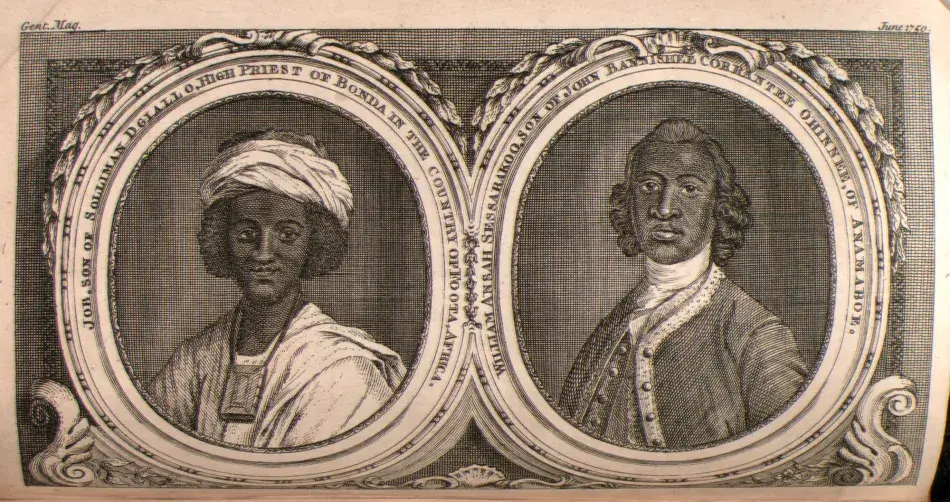
The stories of both men, freed from slavery because of their noble births and then repatriated to their families in Africa, were so widely circulated and celebrated in England that it’s highly unlikely that Hume had not either read this story in the magazine or had not heard of their miraculous deliveries from enslavement.
William Ansah Sessarakoo (ca. 1736–1770)
Gabriel Mathias (1719–1804), Portrait of William Ansah Sessarakoo, son of Eno Baisie Kurentsi (John Currantee) of Anomabu, 1749. Oil on canvas. Image courtesy of the Menil Collection.
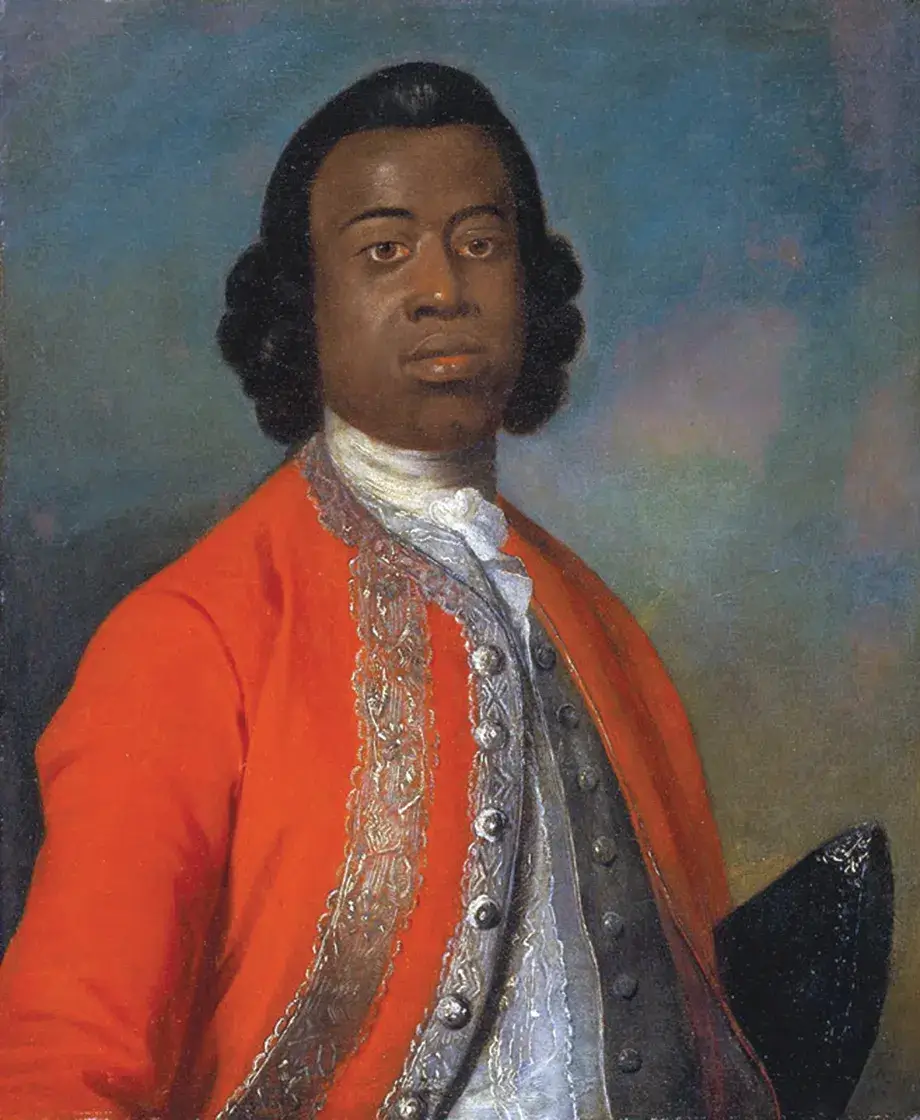
William Ansah Sessarakoo was the son of a wealthy Fante trader. He was kidnapped into slavery around 1736 but eventually was freed by the strenuous efforts of his father. He was taken to London, where he soon became a celebrity. He was introduced to King George III, and attended a performance of the extremely popular play, Oronooko, or the Royal Slave, based on the best-selling novel by Mrs. Aphra Behn. In 1749, he returned to Ghana.4
Job Ben Solomon
William Hoare of Bath (ca. 1707–ca. 1792), Ayuba Suleiman Diallo (Job ben Solomon), eighteenth century. Oil on canvas. Image courtesy of the National Portrait Gallery, London.
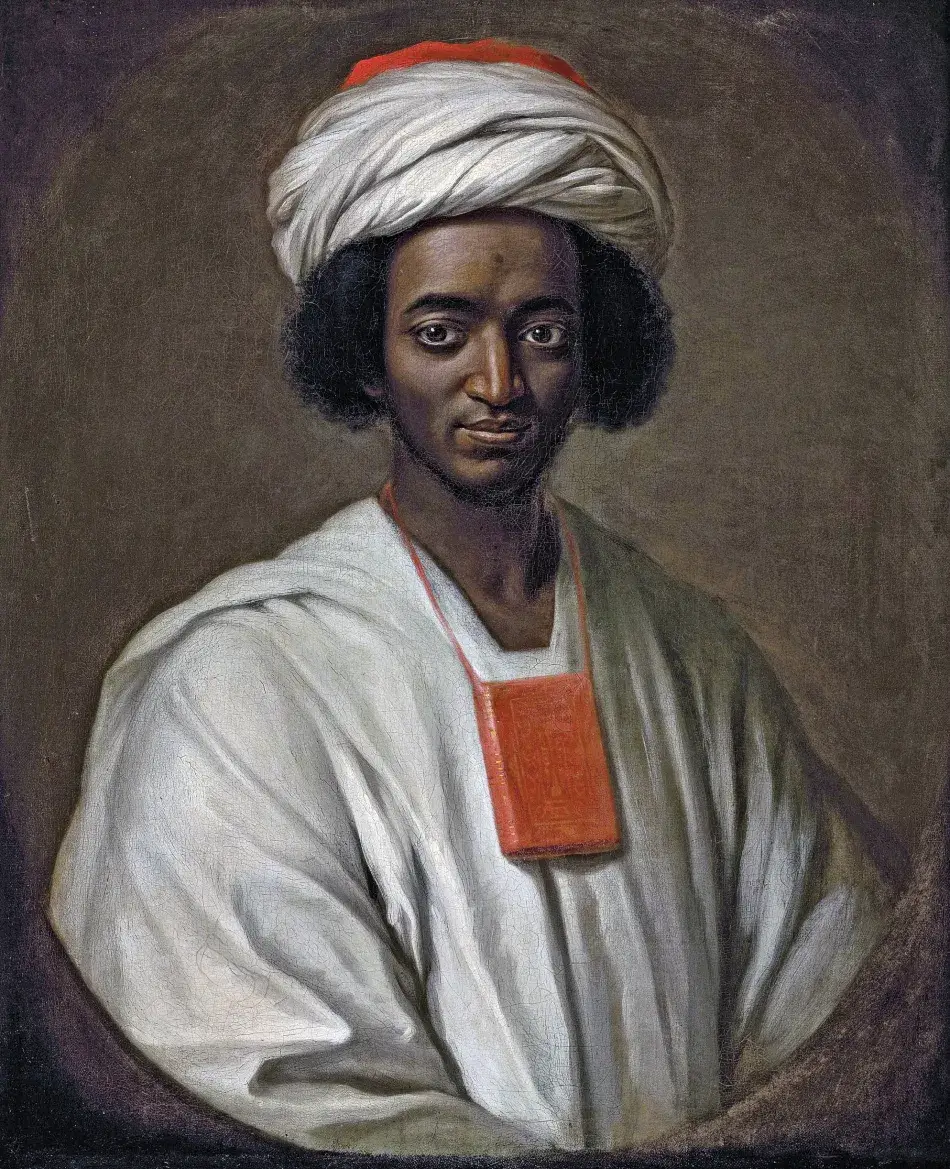
The other man, wearing the turban, is Job Ben Solomon, or Ayuba Suleiman Diallo. He lived between 1701 and 1773. Diallo grew up in Senegal, the scion of a prosperous family. While taking two slaves to be sold, he himself was captured and brought to Annapolis, Maryland. While in jail (he kept running away to pray, as a Muslim), his fluency in Arabic and his aristocratic bearing attracted the attention of a lawyer who happened to be passing through and visiting the jail. Diallo wrote a letter to his father and gave it to the lawyer, Thomas Bluett, who sent the letter to the Royal African Company in London, which in turn sent it to be translated by the Regis Professor of Arabic at Oxford (“There is no good in the country of the Christians for a Muslim,” it read).5 They freed him! Bluett took Diallo to London, where he was the toast of the town. He had his portrait painted, and Bluett even wrote a book about him. Diallo returned to Senegal as an agent of the Royal African Company in 1734, the same year that Bluett published his book about him, in English and in French. And what do you think he did as soon as he got home? He bought a female slave. Diallo was the first African to write his way out of slavery. And, curiously, this act of writing oneself into freedom would become the leitmotif for authors of the slave narratives in this country for well over the next hundred years.6
And there were other prominent Black people in Europe in the eighteenth century of whom Hume would know, no one more so than Angelo Soliman.
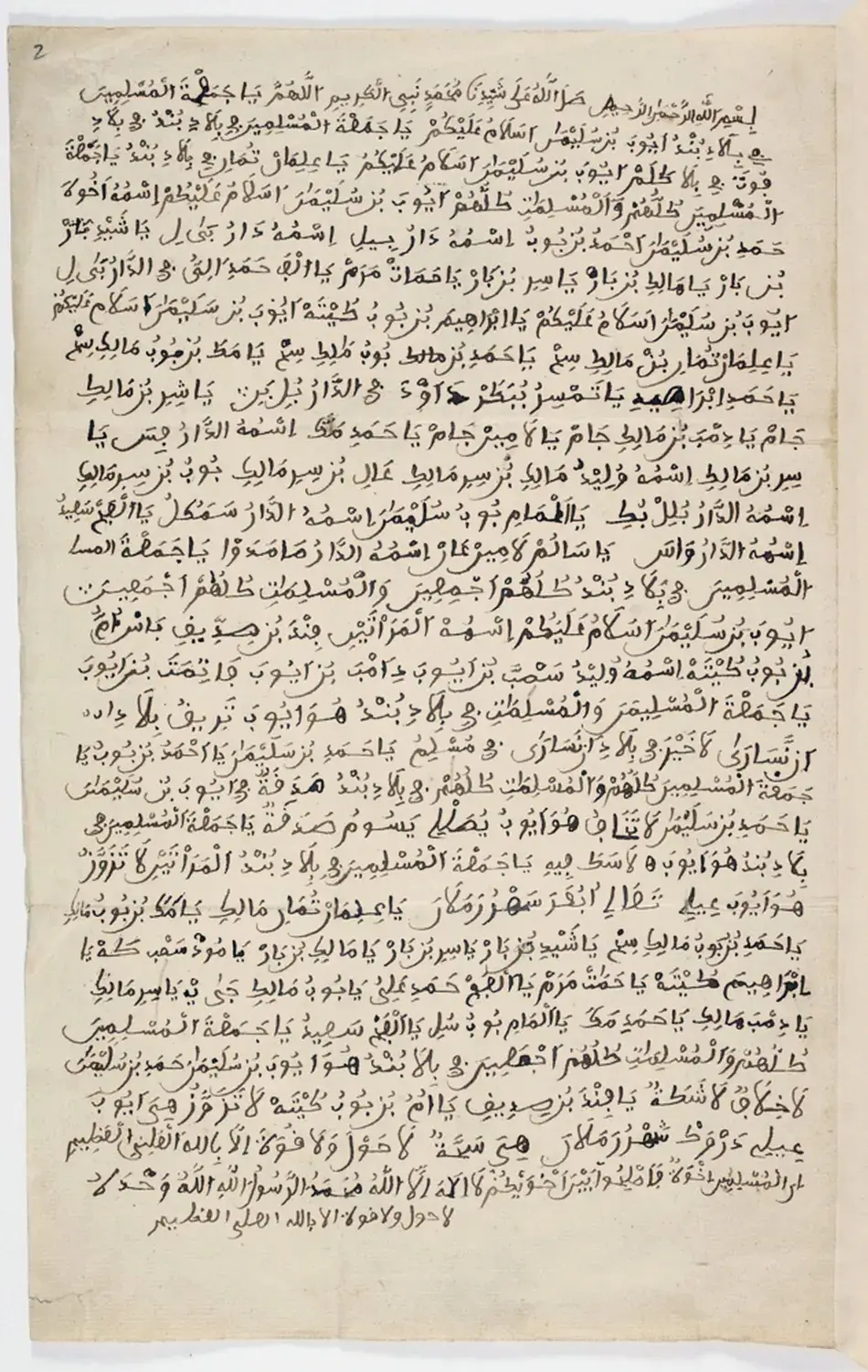
Angelo Soliman (ca. 1721–1796)
Gottfried Haid, based on an artwork by Johann Nepomuk Steiner, ca. 1750. Engraving. Courtesy of Harvard University, Collection of the Hutchins Center for African and African American Research, Cambridge, Mass.
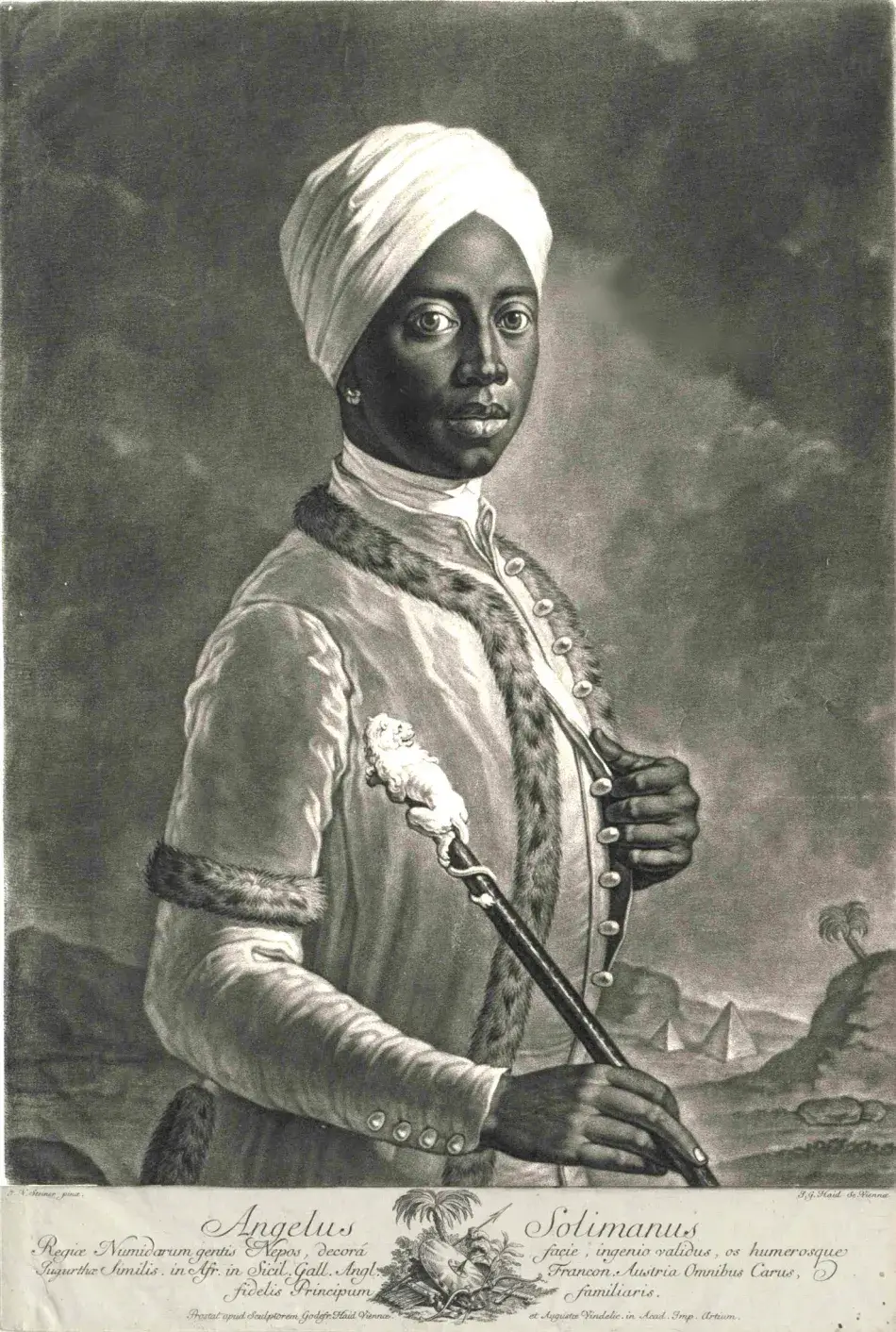
Soliman was “the powerful black man in Europe,” according to art historian David Bindman. Born we think in northeastern Nigeria, he was a friend of Austrian Emperor Joseph II and was the tutor to the son of the Prince of Liechtenstein. He married the sister of a prominent French general, Marshal of Napoleon Bonaparte. He was a member of the famous Masonic lodge, “True Harmony,” of which Mozart and Haydn were members. He even became Grand Master of this lodge and changed its rituals to have a more scholarly bent, so much so that he is still celebrated as “The Father of Pure Masonic Thought.”
But the point is Hume almost certainly knew about Sessarakoo and Diallo, and quite probably had heard about Soliman. He knew that these men could read and write, that they were intelligent, articulate, sophisticated, and aristocratic. But he ignored the evidence, not even mentioning the great Black sixteenth-century university in Timbuktu, just as he ridiculed the achievements of Francis Williams at the University of Cambridge, and just as he ignored any proof of civilization on the African continent. And he did so, consciously or unconsciously, in a discourse he created that we might call “race and reason,” which became a powerful tool in the justification of the slave trade, at the very height of the Enlightenment in Europe in the eighteenth century. All the major thinkers in the Enlightenment who wrote about this question took their starting point from Hume.
And what of the context of the slave trade in relation to Hume’s notion of the absence of the arts and sciences among Africans? By 1750, 4,713,773 Africans had been shipped to the Americas, and of this number, 1,394,823 had been shipped on British vessels. In fact, in the entire history of the slave trade, England would be the second largest exporter of enslaved Africans to the Americas, while France would be the third largest. In the year 1754 alone, the year in which Hume added his footnote, of the 74,559 Africans shipped to the New World, fully 27,500 – more than one-third – were shipped by England alone.7
Diagram of a Slave Ship from the Trans-Atlantic Slave Trade, 1790–1791
Wood engraving. Courtesy of The Lilly Library of Rare Books and Manuscripts, Indiana University, Bloomington.
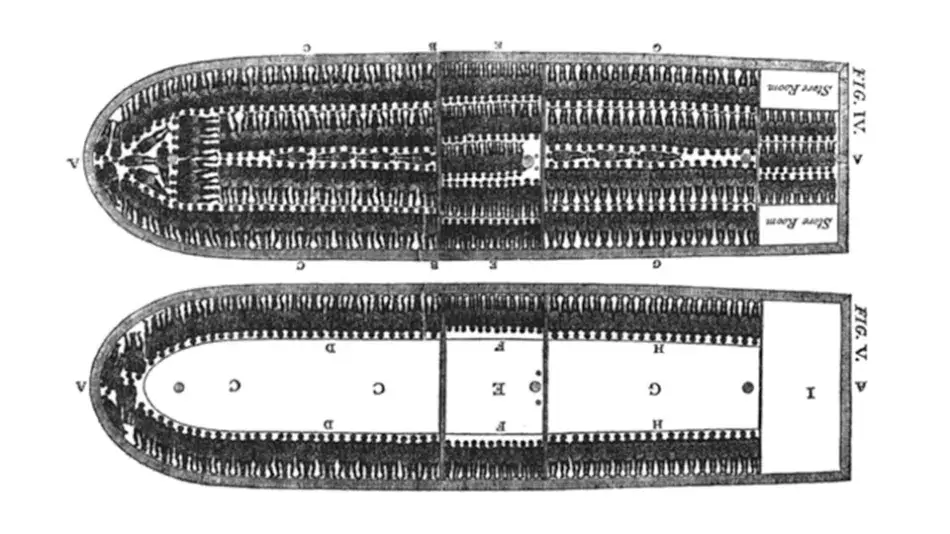
Ten years later, in section IV of his “Observations on the Beautiful and the Sublime,” in a riff on David Hume’s footnote, Immanuel Kant had this to say:
Immanuel Kant (1724–1804)
Artist unknown, Portrait of Immanuel Kant (1724–1804), ca. 1790. Painting. Public domain, via Wikimedia Commons.
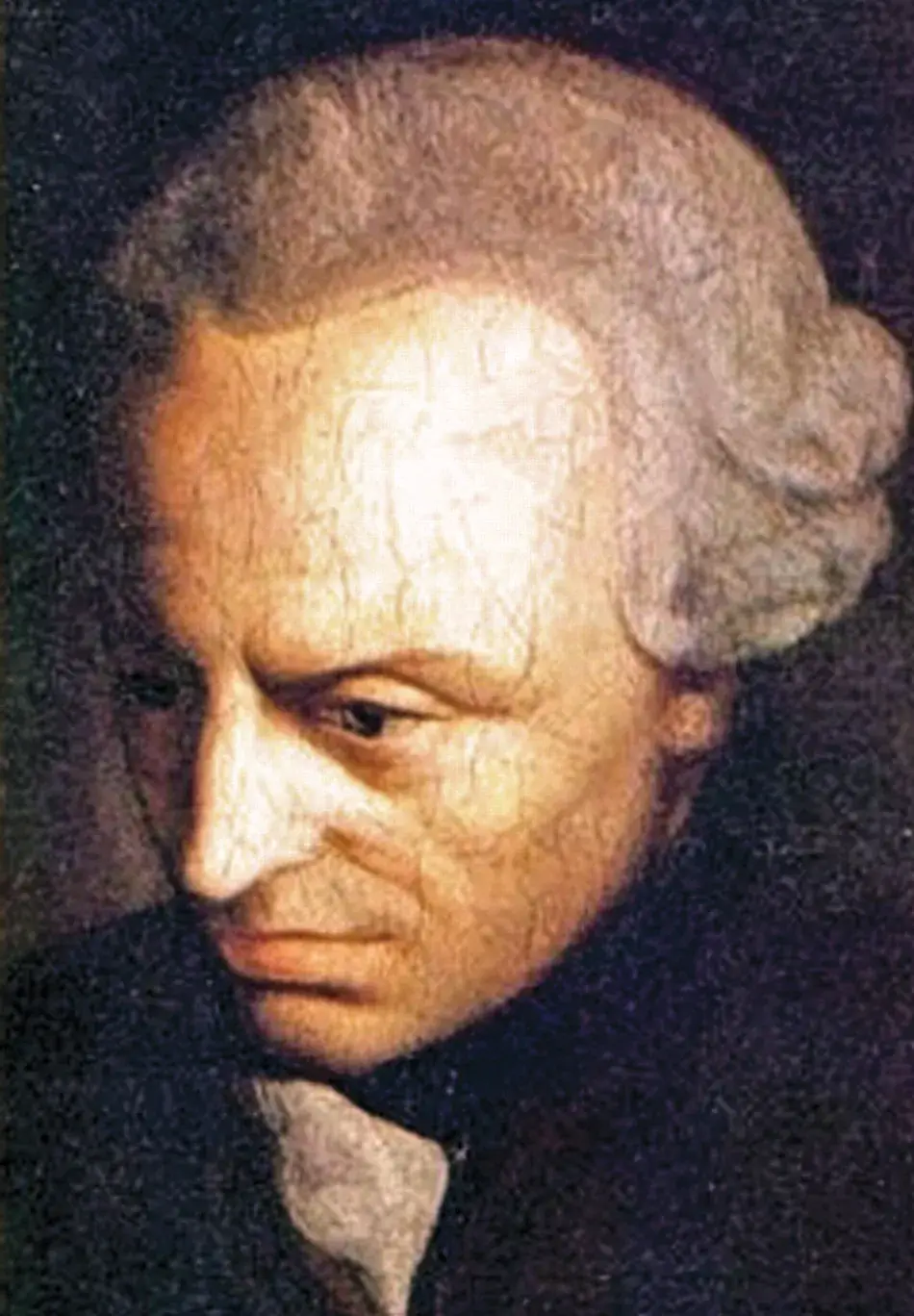
The Negroes of Africa have by nature no feeling that rises above the trifling. Mr. Hume challenges anyone to cite a single example in which a Negro has shown talents, and asserts that among the hundreds of thousands of blacks who are transported elsewhere from their countries, although many of them have even been set free, still not a single one was ever found who presented anything great in art or science or any other praise-worthy quality, even though among the whites some continually rise aloft from the lowest rabble, and through superior gifts earn respect in the world. So fundamental is the difference between these two races of man, and it appears to be as great in regard to mental capacities as in color. The religion of fetishes so widespread among them is perhaps a sort of idolatry that sinks as deeply into the trifling as appears to be possible to human nature. A bird feather, a cow’s horn, a conch shell, or any other common object, as soon as it becomes consecrated by a few words, is an object of veneration and of invocation in swearing oaths. The blacks are vain but in the Negro’s way, and so talkative that they must be driven apart from each other with thrashings.
[By contrast]: Among all savages there is no nation that displays so sublime a mental character as those of North America. They have a strong feeling of honor . . . truthful and honest . . . extremely proud . . . if a lawgiver arose among the Six Nations, one would see a Spartan republic rise in the New World; for the undertaking of the Argonauts is little different from the war parties of these Indians . . . Valor is the greatest merit of the savage and revenge his sweetest bliss.8
I could go on at length about this passage, but suffice it to say that Kant’s contribution to racist science was the conflation, in this very passage, of “character,” as it were, with “characteristics”: all that this poor man had to say was “stupid” because of the color of his skin, which was “black from head to toe.” So, twenty-three years after the close of the competition at the Bordeaux Academy, blackness had come firmly to signify an absence, all that was opposite or counter to “the arts and sciences,” the absence of Reason itself.
The book I have published with Professor Curran about the Bordeaux Academy’s curious essay contest is a window into a critically significant moment in proto-anthropology. While the explanations I have cited tell us very little about the riddle of blackness, they reveal the Enlightenment-era desire to explain Black people as a-rational, as morally corrupt, and eventually as pathological.
The essays provide the intellectual infrastructure allowing Europeans (and their descendants in the New World) to pass on centuries of misinformation about Africans and people of African descent in a much more structured and understandable way.
The Bordeaux Academy helped usher in a new era, one in which science would claim the right to provide compelling anatomy-based explanations for humankind’s many varieties. These new methods and discoveries would, of course, have another function as well: vindicating the ongoing dehumanization of people of color within the American plantation system. In other words, almost from their very beginnings, the “considerations” given by men of learning in the most august of learned societies, ours included, to the place of people of color on the Great Chain of Being, and their relation to knowledge of the arts and sciences, reveal how anti-Black racist discourse was, and remains, continually imbricated in the discursive fabric of the world of learning, at least since the Enlightenment. Am I over-reading here? Or projecting backwards, anachronistically and unfairly imposing a connotation from today’s discourses about race onto our innocent academician forebears?
Well, we can begin to answer this question by noting that this very relation was depicted visually in American artist Samuel Jennings’s 1792 painting, Liberty Displaying the Arts and Sciences, for the Library Company of Philadelphia, aimed at promoting the cause of abolition in the United States.
Liberty Displaying the Arts and Sciences
Samuel Jennings (fl. 1789–1834), Liberty Displaying the Arts and Sciences, 1792. Oil on canvas. Courtesy of the Library Company of Philadelphia.
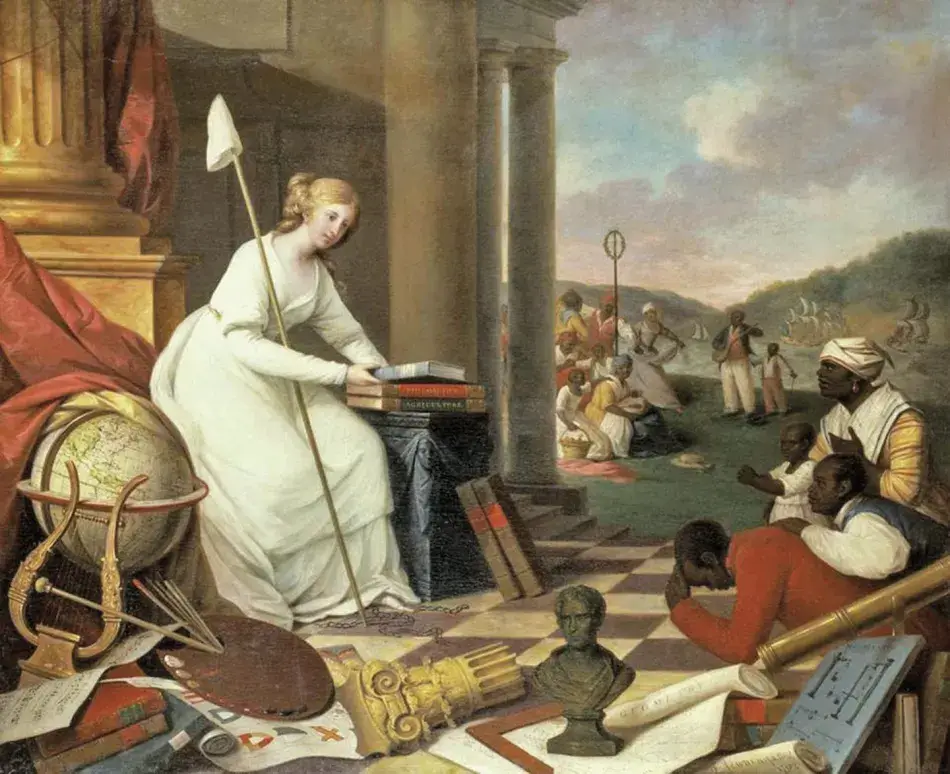
The painting, as Charmaine Nelson and Robert C. Smith point out, depicts Liberty personified as a white, blond-haired female, in full possession of “the arts and sciences.” In their description of the painting, they include philosophy, agriculture, a bust of an unidentified learned man, a scroll labeled “geometry,” a globe symbolizing geography, a broken Corinthian column symbolizing the heritage of Graeco-Roman civilization to which Europe is heir, a lyre and sheet music, and symbols of history and heraldry. She – the subject of the painting – is presenting all of these objects to passive, wide-eyed, formerly enslaved persons, depicted in counterpoint as objects observing, but not possessing, the accumulation of knowledge that the Enlightenment represents. Further in the background, more formerly enslaved people dance with wild abandon around a liberty pole, symbolizing their exuberance at the idea of freedom, if not at their own mastery of these arts and sciences, which the painting suggests remains a dream of Black Enlightenment, a dream as distant as the dancers are from Liberty’s remarkable scene of instruction.9
Even then, the relation between the mastery of the arts and sciences, the accumulation of knowledge, had become racialized and visualized in binary tropes of Black/white, knowledge/ignorance, absence/presence – all too familiar to Western subjects. Black people can observe knowledge, wide-eyed, but not partake of it, and not create it. Nevertheless, the painting itself seems to be a reversed troping, signifying through its positioning and symbolism, on Francis Williams’s portrait, whose poetry David Hume trashed, and which art historian David Bindman has brilliantly deduced is a self-portrait.10
Francis Williams
Artist unknown, Francis Williams, the Scholar of Jamaica, ca. 1745. Oil on canvas. Courtesy of the Victoria & Albert Museum.
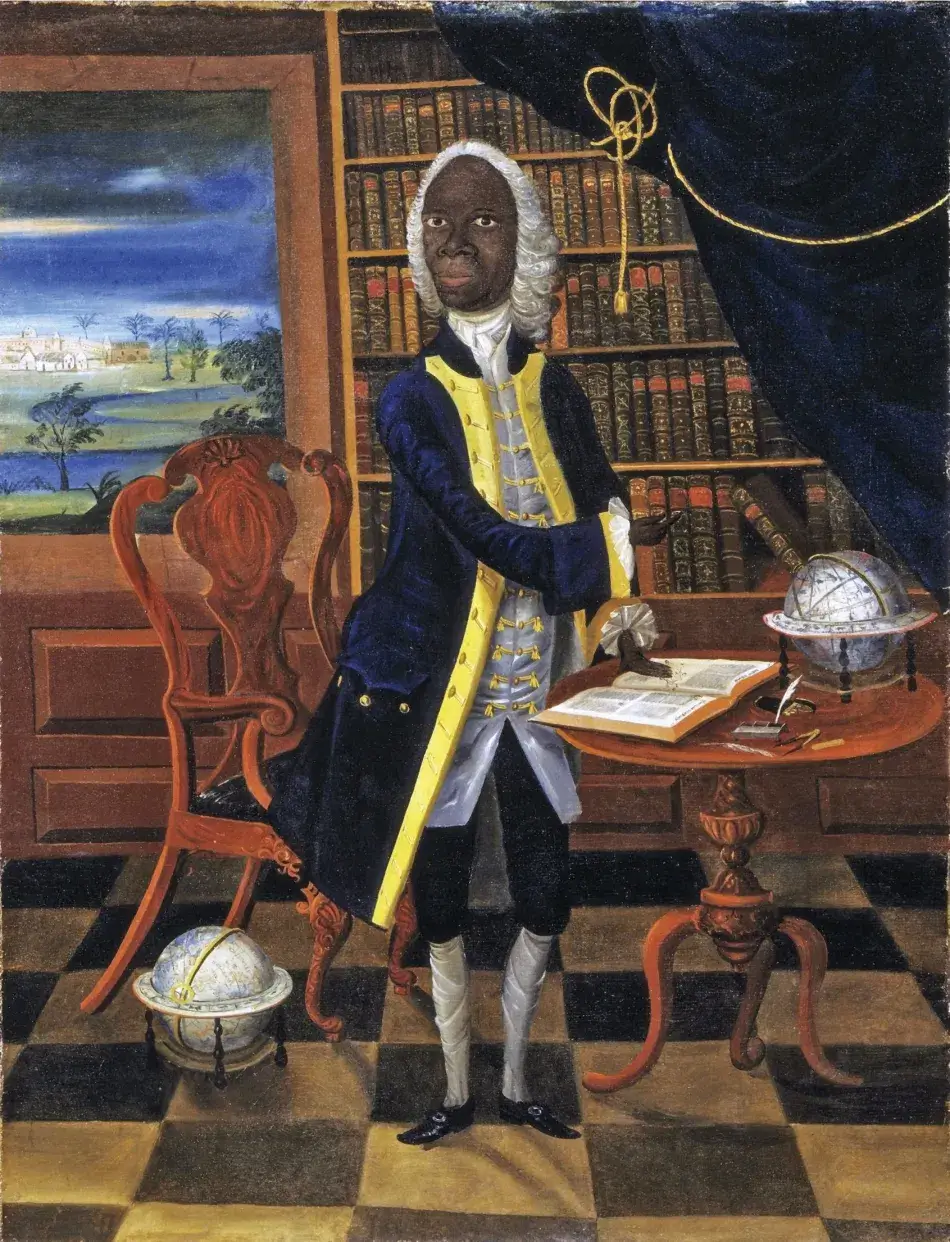
Which brings us back to Bordeaux and the curious competition of 1739. It’s all too easy to spot the mote in our antecedents’ eye, ignoring the beam in the perspective that we, ourselves, bring to intellectual inquiry. So, let me ask you to engage in a thought experiment with me – a hypothetical. Imagine if, next year, we were to organize a new Bordeaux conference by soliciting the greatest minds on the planet today to speculate on one of the burning questions of our times – experts demonstrating their expertise with words. I can think of many topics. I’m sure you can, too: inequality, democracy, race and class, capitalism, public health, sexuality and gender, and, of course, climate change. It’s exciting to think about what they’d tell us that we don’t already know. Now, I’d like you to imagine what our Academy heirs three hundred years from now will think of our contest of ideas. Would they say, oh, they got it right – how prescient? Or would our human frailties be glaring to them? Would they look at our conference ideas and see how we were bounded by the limits of our present, or, perhaps, compromised in positions? Would they point out our continued preference for gas-powered automobiles and planes, our home heating systems, or the extent to which our pension funds are invested in the fossil-fuel economy? You get the idea, which is why we must approach subjects like the Bordeaux conference with rigor as well as humility, skepticism alongside a recognition of the limits of our own ability to divine “the truths” of our world. My friends, let these virtues – and an awareness of our vices – form the basis for the affinity that we, the members of this august Academy, share as our defining characteristic; let them be our fundamental, guiding principles in uncertain times, when big ideas, with big stakes, are being discussed and debated at every level of society. This – and the responsibility we have to examine how our own research reflects, affirms, or encodes far deeper social and economic contexts unfolding around us in the darkest places – is both the opportunity and challenge of our beautiful community.
It gives me an enormous amount of pleasure to accept this award in a spirit of fellowship for those of us who love and honor the great tradition of scholarship in the humanities, and I do so with the journey of our ancestors very much top of mind.
John Adams (1735–1826)
Gilbert Stuart (1755–1828), John Adams, ca. 1800–1815. Oil on canvas. Gift of Mrs. Robert Homans. Courtesy of the National Gallery of Art, Washington, D.C.
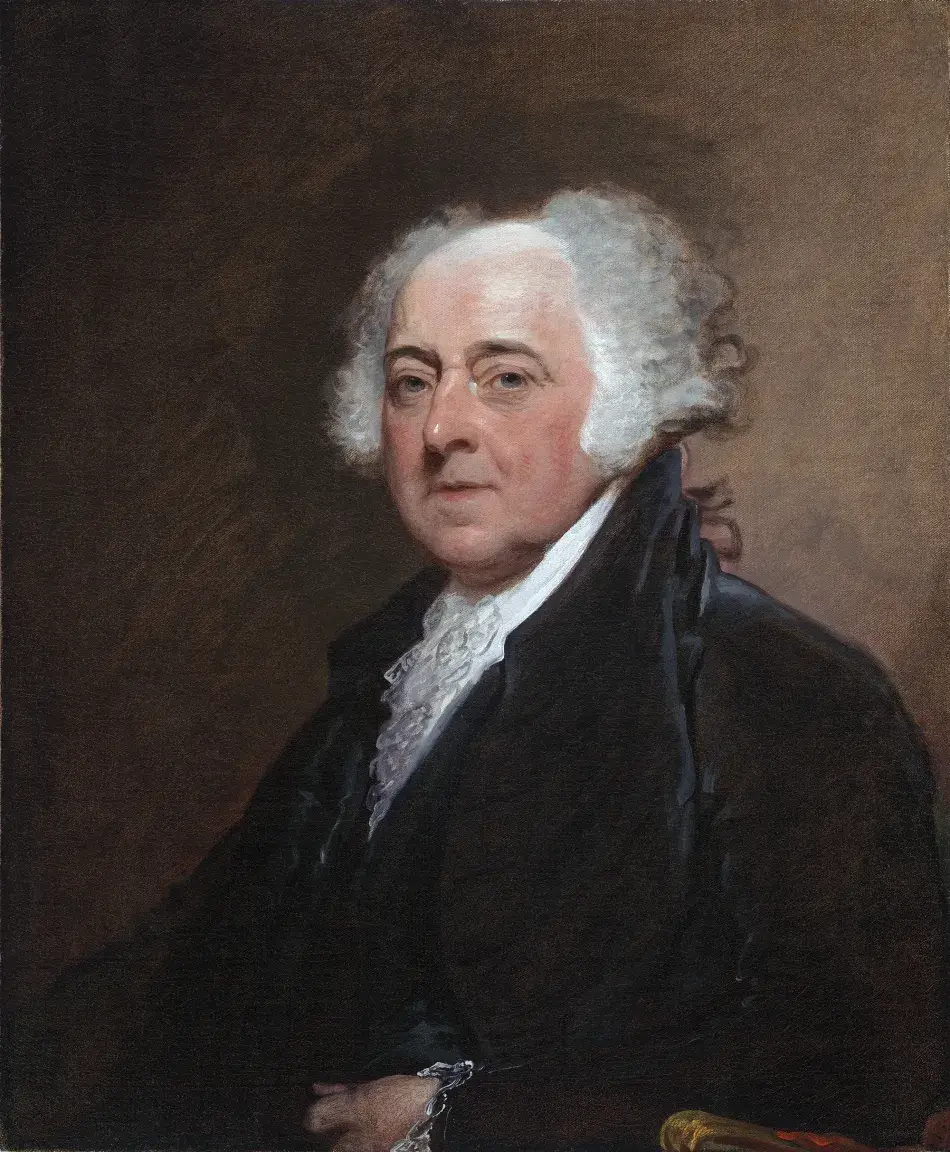
When John Adams and his colleagues founded the American Academy in 1780, my maternal fourth great-grandfather, a free African American named John Redman, had been serving that Patriot cause in the Continental Army for two years. Little could John Adams – or, for that matter, John Redman – have imagined that 213 years later, a Black man’s descendant would be inducted into the fledgling Academy, or that 241 years later, that descendant would be honored by the Academy for scholarship about the contributions of persons of African descent to a redefined notion of “the arts and sciences.” I accept this award also on behalf of the African American people as a whole, who have endured centuries of slavery, segregation, and racial discrimination, in part, by holding fast to a dream of a non-racial republic of letters, synonymous with full and equal access to education.
I have devoted my professional life to studying and advancing our ancestors’ struggles against anti-Black racism, both inside and outside of the academy. In this time of turbulence and pain, division and despair, let us draw strength from the many sacrifices made by those who have gone before us, determined to hold fast to the ideals on which our republic and this Academy were founded. For almost a quarter of a millennium, the American Academy’s goal has been to serve as a paragon of enlightenment and the unfettered pursuit of truth, a place where, as Du Bois so eloquently put it, “wed with Truth [we] dwell above the veil.” And while its members have sometimes fallen short of this goal, through the necessary process of self-critique and the free exchange of ideas from members representing the broadest diversity of race, of gender, of religious and sexual preference, we may begin to approach and embrace a genuinely “human” definition of “the arts and sciences,” one far broader and more encompassing than our founders dared to imagine.
I consider it the honor of a lifetime in letters to be selected to receive an award created as a tribute to a scholar who himself exemplified these values in his own pioneering work in musicology and in the history of music long before doing so was popular or trendy.
© 2022 by Henry Louis Gates, Jr.
